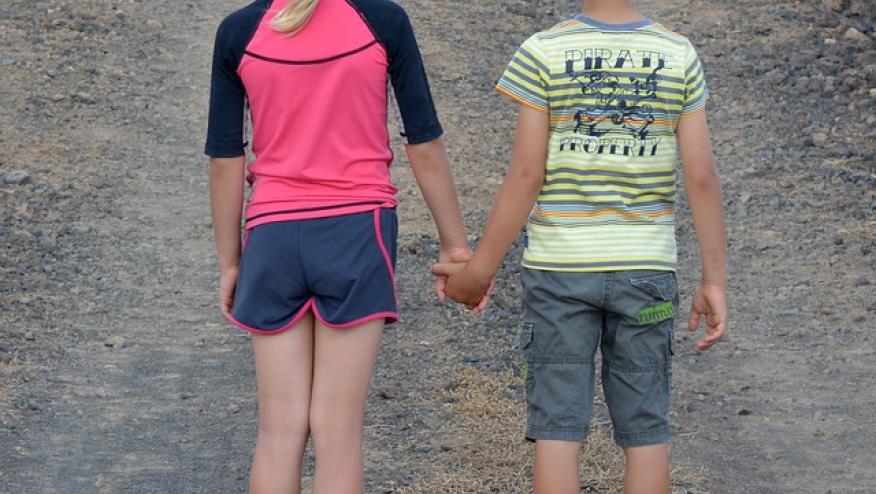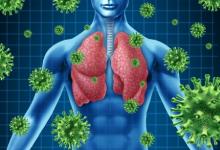Features Predict Chronicity in Myositis Save

Certain serologic and clinical features can help predict a chronic disease course among children with juvenile idiopathic inflammatory myopathies (JIIM), a large registry study showed.
For example, in a specific multivariate analysis, the presence of anti-p155/140 autoantibodies was linked with a chronic or polycyclic disease course rather than a monocyclic course, with odds ratios of 3.9 (95% CI 2-7.7) and 2.3 (95% CI 1.1-5), respectively, according to Lisa G. Rider, MD, of the NIH's National Institute of Environmental Health Sciences in Bethesda, Md., and colleagues.
In addition, more severe disease at onset was associated with a chronic course rather than a monocyclic (OR 2.1, 95% CI 1.2-3.8) or polycyclic course (OR 2.6, 95% CI 1.4-4.9), the researchers reported online in Arthritis & Rheumatology.
The Myopathies
The diseases grouped as JIIM are characterized by systemic autoimmunity leading to muscle weakness, skin rashes, and internal organ involvement. It includes juvenile dermatomyositis, the most common variant, juvenile polymyositis, with muscle weakness but lacking the rashes typical of dermatomyositis, and juvenile connective tissue myositis, in which patients have the inflammatory myopathy and also meet the disease criteria for one or more other autoimmune diseases such as systemic lupus erythematosus or juvenile idiopathic arthritis.
Rider and her colleagues previously reported on these clinical phenotypes of JIIM, revealing that among 436 patients enrolled in NIH or FDA registries through 2010, 81.2% had juvenile dermatomyositis, 7.6% had juvenile polymyositis, and 11.2% had the connective tissue variant.
They also examined the pattern of autoantibodies in their cohort, which they classified as either myositis-specific or myositis-associated. The myositis-specific group included anti-p155/140 autoantibody, found in one-third of patients, anti-MJ autoantibodies, detected in 20%, and anti-synthetase, anti-SRP, and anti-Mi-2 in smaller numbers of patients.
The myositis-associated antibodies included anti-Ro, present in 6.3%, anti-RNP in 5.6%, and anti-PM-Scl in 3.7%.
In that analysis, clinical features associated with the predominant anti-p155/140 antibody included malar and "shawl-sign" rashes involving the back of the neck, upper back, and shoulders, as well as photosensitivity and persistent symptoms.
The disease course in this group of diseases typically is classified as monocyclic, in which a single episode resolves with or without treatment and with no recurrence for at least 2 years, polycyclic if there is recurrence after definite remission, or chronic if the disease persists for more than 2 years even with treatment.
"Long-term outcome studies have indicated that patients with juvenile dermatomyositis with a chronic course display greater disability, weakness, and disease damage, as well as more frequent calcinosis and lipodystrophy. Patients with a chronic course also require long-term immunosuppressive therapy," the researchers observed.
Rationale and Design
Because few studies have looked at factors that might influence the disease course in JIIM, and most of the published studies were small and included only the dermatomyositis phenotype, Rider and colleagues from the Childhood Myositis Heterogeneity Study Group sought to examine the disease course in the wider patient spectrum included in their large cohort, which now includes 365 patients.
In the current analysis, they looked at potentially influential factors including demographics, clinical and laboratory features, and environmental exposures and immunogenetic polymorphisms previously identified.
Associations on univariable analyses were defined as "probable" if thePvalue was less than 0.01 or "possible," if lower than 0.05. Two multivariable analyses were done: a general analysis of "umbrella variables" such as "any myositis-specific autoantibodies" and a specific analysis of variables such as anti-p155/140 autoantibodies.
Enrollment took place during the years 1990 to 2012, and median follow-up time from the time of diagnosis was 4.8 years.
Chronicity and Serology
Patients' average age at the time of diagnosis was about 7.5 years. The majority of patients were white girls, and about 80% had the dermatomyositis phenotype. There were no significant associations with disease course for age, sex, race, or phenotype.
When the researchers compared features of chronic disease with monocyclic disease in the univariate analysis, they found probable associations for photosensitivity (OR 2.9, 95% CI 1.5-5.8), cuticular overgrowth (OR 3.2, 95% CI 1.4-7.5), and positivity for any myositis-specific autoantibodies (OR 2.9, 95% CI 1.6-5.3) and in particular for anti-p155/140 autoantibodies (OR 3.6, 95% CI 1.9-7).
Probable associations also were seen for any myositis-associated autoantibodies (OR 3.2, 95% CI 1.3-7.9) and particularly for anti-Ro autoantibodies (OR 10, 95% CI 1.3-76.9).
Possible associations were found for severe illness at disease onset (OR 1.7, 95% CI 1-3.1), with disease severity being rated on a 4-point scale, and the typical shawl-sign or V-sign rashes (OR 2.2, 95% CI 1-4.9). V-sign rashes appear on the front of the chest, with redness in the area exposed by a V-necked sweater.
Comparison of chronic versus polycyclic disease identified probable associations for severe illness at onset (OR 2.7, 95% CI 1.4-5), V-sign and shawl-sign rashes (OR 3.2, 95% CI 1.3-8), weight loss (OR 2.5, 95% CI 1.3-4.7), and contractures (OR 2.6, 95% CI 1.3-5). The chronic course also was associated with higher clinical symptoms scores (OR 48, 95% CI 4-556 for each 0.01 unit higher score).
In addition, a possible association was seen with the chronic versus polycyclic course for dyspnea at rest (OR 8.5, 95% CI 1.1-66.7).
Among possible environmental factors, the researchers found that a higher mean ultraviolet index, particularly in the month before diagnosis, was probably associated with a chronic course among boys (OR 1.5, 95% CI 1.1-2.1). However, they had no information about personal levels of ultraviolet exposure, so "the role of ultraviolet exposure on influencing disease course needs further study," they noted.
They were unable to identify any specific alleles or polymorphisms that were more common among patients with a chronic disease course, although HLA-DRB1*1501 was present less often among Caucasians who had a chronic course.
Conclusions and Limitations
In the general multivariable analysis, independent associations were seen for a chronic course with any myositis-specific autoantibodies (OR 4.2, 95% CI 2.2-7.9), any myositis-associated autoantibodies (OR 4.8, 95% CI 1.8-12.9), and an infection within 6 months (OR 2.5, 95% CI 1-5.8). In addition, higher clinical symptom scores were seen for a chronic versus a polycyclic course (OR 146, 95% CI 8-2,526).
"In conclusion, myositis-specific and -associated autoantibodies, specifically anti-p155/140 autoantibodies, and a number of clinical features and environmental exposures at illness onset or diagnosis were associated with a chronic disease course in patients with JIIM. These findings suggest that early factors can be identified that are associated with poorer outcomes," Rider and colleagues wrote.
Limitations of the study, which was exploratory, included the inability of the researchers to determine the extent and severity of muscle and skin involvement or to account for changes in treatment over time.
The study was funded by the NIH. The authors reported relationships with the Cure JM Foundation and the Oklahoma Medical Research Foundation Clinical Immunology Laboratory for myositis antibody testing.
This story is brought to RheumNow readers by our friends at MedPage Today. It was originally published on November 4, 2015.







If you are a health practitioner, you may Login/Register to comment.
Due to the nature of these comment forums, only health practitioners are allowed to comment at this time.